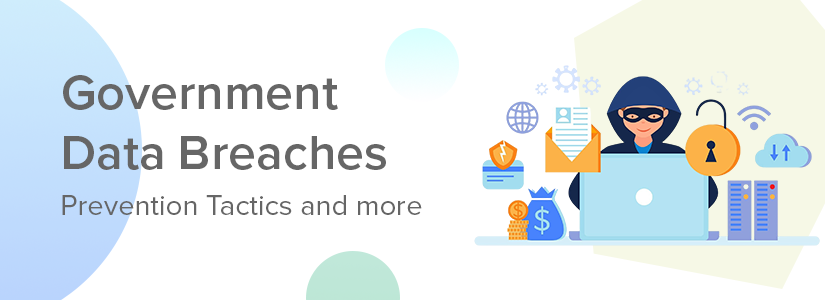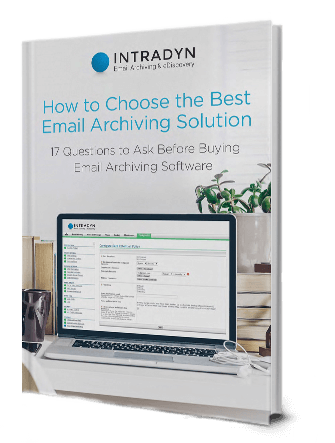Government Data Breaches: Prevention Tactics and more

Government data breaches — how much damage can they really cause?
Just ask the millions of citizens whose sensitive information has been exposed in high-profile
incidents like the OPM breach or the SolarWinds hack. The damage goes beyond privacy
violations—operations are disrupted, cybercrime escalates, and confidence in government
institutions is shaken, sometimes for years.
A single data breach can undermine years of trust in government institutions, taking a serious
toll on public confidence. Furthermore, the financial impact is affected, as average cost of a
public sector data breach is estimated at $4.45 million. These breaches can lead to disrupted
operations and a rise in cybercrime activity, causing further damage. Preventing these breaches
requires a robust cybersecurity strategy tailored to the unique challenges faced by government
agencies.
In this article, we’ll cover real-world examples of breaches, their impact, and effective strategies
to safeguard sensitive information.
UNDERSTANDING GOVERNMENT DATA BREACHES
Government data breaches often result from the actions of individuals or groups seeking to exploit sensitive information held by government agencies. These breaches can lead to stolen, exposed, or misused personal data, posing threats to national security, disrupting public services, and compromising citizens’ privacy. Understanding the types of data at risk and the common causes of breaches enables governments and organizations to implement targeted and proactive security measures, reducing vulnerabilities and safeguarding critical information.
Types of Data at Risk
- Personally Identifiable Information (PII): This includes data that identifies individuals, such as names, addresses, phone numbers, Social Security numbers, email addresses, and birthdates. In the wrong hands, PII can be exploited for identity theft, fraud, or targeted attacks like phishing. Due to the fact that PII is frequently used in government services, healthcare, and financial institutions, it is among the most valuable targets for cybercriminals seeking to exploit individuals or organizations.
- Classified Information: This category encompasses national defense secrets, intelligence reports, diplomatic communications, and other sensitive government data restricted to authorized personnel. Breaches of classified information can jeopardize national security, expose military strategies, and reveal vulnerabilities to adversaries.
- Financial Records: Financial data includes taxpayer information, government budgets, economic reports, and transaction records, all essential for managing public funds and ensuring stable government operations. A breach could result in fraudulent activities, such as fund theft or manipulation of financial reports. Furthermore, exposing this information may weaken public trust in government institutions and cause significant financial losses.
Common Causes
- Phishing and Social Engineering: Cybercriminals often pose as trusted organizations to deceive employees into disclosing sensitive information, such as login credentials or financial details. These attacks frequently occur through emails, phone calls, or fake websites designed to appear legitimate. Social engineering exploits human error, manipulating individuals into clicking malicious links or sharing confidential data. This subtle yet effective tactic allows hackers to take advantage of security vulnerabilities.
- Vulnerabilities in Outdated Systems: Legacy systems without the latest security updates are common targets for cybercriminals. These older systems often lack critical security features, including encryption, multi-factor authentication, and intrusion detection, leaving them ill-equipped to counter modern cyber threats. Hackers are highly aware of these shortcomings, making outdated systems a significant risk for data breaches. Unfortunately, many government agencies still depend on these systems, increasing their susceptibility to data breach attacks.
OPM BREACH (2015)
In the 2015 U.S. Office of Personnel Management (OPM) breach, hackers accessed the personal records of over 21 million individuals, including federal employees and those with security clearances. The breach primarily caused from outdated systems and insufficient encryption, which left sensitive data vulnerable to threats This massive security failure not only compromised national security but also endangered the personal privacy of millions, where many were involved in critical government operations. Additionally, the breach exposed systemic weaknesses in the government’s cybersecurity practices, particularly the reliance on legacy systems lacking modern security measures. Hence, the incident highlighted the urgent need for stronger encryption, timely system updates, and regular security audits to identify and mitigate vulnerabilities before exploitation.
SolarWinds Hack (2020)
In the 2020 SolarWinds hack, a sophisticated supply chain attack infiltrated multiple U.S. government agencies through compromised software updates. The attackers exploited weaknesses in supply chain security and used advanced attack vectors to gain unauthorized access. This breach exposed sensitive data from federal agencies and resulted in response costs totaling millions of dollars. In response, agencies have strengthened software integrity checks and increased the use of Zero Trust models to bolster security measures.
KEY PREVENTION STRATEGIES FOR GOVERNMENT DATA BREACHES
Prevention strategies are essential for safeguarding sensitive information, protecting national security, and maintaining public trust. With the rise in cyber threats targeting government systems, proactive measures such as strong encryption and regular vulnerability assessments play a key role in minimizing risks. Effective prevention not only reduces the financial and reputational damage that comes with a breach, but it also ensures taxpayer money isn’t wasted on costly response and recovery efforts. Ultimately, these strategies protect the confidentiality, integrity, and availability of government data, which are crucial for the smooth functioning of public services and the security of citizens.
- Advanced Cybersecurity Frameworks: The NIST Cybersecurity Framework offers a comprehensive structure for managing and reducing cybersecurity risks, focusing on key areas like identification, protection, detection, response, and recovery. Many U.S. federal agencies have adopted this framework to strengthen their resilience against cyber threats while ensuring compliance with federal regulations. Similarly, the CISA Guidelines provide actionable strategies for securing critical infrastructure and government systems. These guidelines highlight the importance of proactive measures, such as risk assessments, incident response plans, and continuous monitoring, to address emerging threats in an ever-evolving digital landscape. By adopting these frameworks, agencies can significantly improve their cybersecurity posture and minimize vulnerabilities.
- Encryption and Data Security: Encryption is one of the most effective tools for protecting sensitive data from unauthorized access. By converting data into unreadable formats using encryption algorithms, only authorized users with the decryption key can access the information. Government agencies should implement advanced encryption standards (AES) to protect data both at rest and in transit, ensuring security even if intercepted. Regular audits of data storage systems are essential for identifying and addressing potential vulnerabilities that cybercriminals could exploit. Moreover, encryption should be integrated into all stages of data handling, including transmission, storage, and backup, to ensure comprehensive security. Adopting these practices guarantees that government data remains protected against cyber threats.
- Multi-Factor Authentication (MFA) and Zero Trust Models: Multi-Factor Authentication (MFA) requires users to provide two or more forms of identification to access systems, adding an extra layer of security. This approach makes it significantly more difficult for unauthorized individuals to gain access, even if they have obtained login credentials. By requiring something the user knows (like a password), something they have (such as a phone or smart card), and something they are (biometric verification), MFA significantly reduces the risk of breaches. Additionally, adopting a Zero Trust Architecture further strengthens security by assuming no user or device is inherently trusted, even if they are within the network. This model requires continuous verification at every stage of access, ensuring security is consistently maintained. Both MFA and Zero Trust models are vital in securing sensitive government data and protecting access to critical systems.
- Regular Vulnerability Assessments and Updates: Regular vulnerability assessments and timely software updates are essential for maintaining a strong security posture. Frequent patching of systems ensures that known exploits are addressed quickly, reducing the window of opportunity for cybercriminals. Real-time monitoring tools, such as intrusion detection systems (IDS), play a critical role in identifying and responding to threats as they arise. These systems continuously analyze network traffic for signs of suspicious activity, enabling organizations to detect potential breaches before they escalate. By combining regular patch management with real-time monitoring, agencies can stay ahead of emerging cyber threats and swiftly mitigate risks to their systems. This proactive approach is crucial for maintaining the integrity and security of government infrastructures.
CONCLUSION
Government data breaches pose a significant threat to national security and public trust. To minimize these risks, it is crucial to implement strong cybersecurity frameworks, robust encryption, and proactive monitoring systems. High-profile incidents like the OPM and SolarWinds breaches serve as reminders of the severe consequences when cybersecurity measures are inadequate. Governments must make cybersecurity an ongoing priority and continuously evolve their defenses. By staying vigilant, anticipating emerging threats, and adapting to new challenges, we can strengthen government systems, enhance security, and better protect sensitive data.

